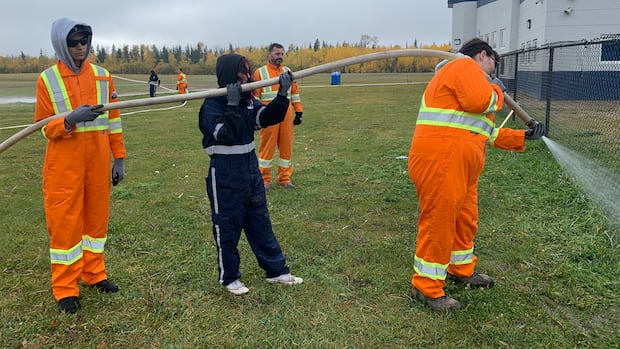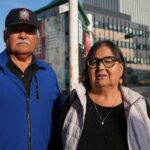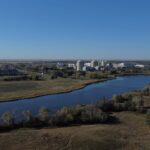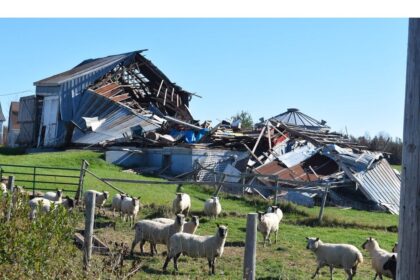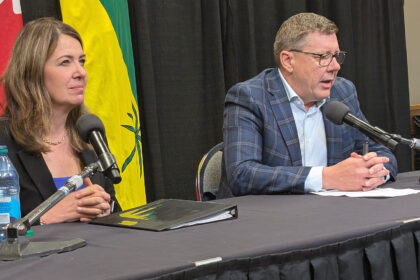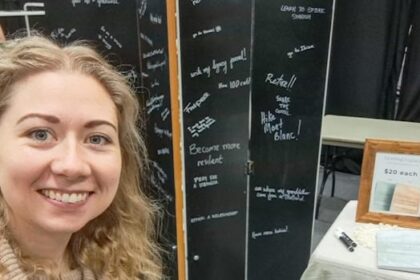IndigenousYouth in Sturgeon Lake Cree Nation put on protective gear and wrestled with fire hoses as part of a program to train hundreds of Indigenous youth to fight wildfires. Elder says youth participation gives her hope for the future after devastating 2023 wildfireThe training from the National Indigenous Fire Safety Council is free to Indigenous youth ages 15 to 30. (Samantha Schwientek/CBC)On a chilly fall morning about a dozen youth in Sturgeon Lake Cree Nation put on protective gear and wrestled with fire hoses as part of a program to train hundreds of Indigenous youth to fight wildfires. For these community members, the training last week is also part of the healing process after a 2023 wildfire ripped through the area 300 kilometres north of Edmonton and destroyed dozens of homes in the community. Joseph Noskye, 18, who attended the training, said that fire is why he took part.”It makes me want to go out and try and help others,” he said. “It was devastating. Watching a lot of people cry over their homes and stuff was sad.”The free training from the National Indigenous Fire Safety Council (NIFSC) teaches youth about wildland fires and how to fight them. The program has trained over 400 youth ages 15 to 30, from Yukon to New Brunswick, in just eight months, according to training and accreditation director Brett Pituka.Pituka said the initial goal was to train about 420 youth by March 2026 — a goal they met about five months early in Sturgeon Lake. “Wildland fires are becoming bigger in scope because the seasons are becoming longer, climate change is happening, and so Canada is stretched when it comes to wildland firefighters,” Pituka said.Joseph Noskye, 18, says he enjoyed the training and hopes to be able to use it to serve his community in the future. (Peter Evans/CBC)He said the program allows youth to be accredited for work with some firefighting companies, and they are also well set up to pursue provincial accreditation. “Which is what we saw after one of our deliveries from Manitoba earlier this year,” he said.”Some of the people from that crew got sent out to B.C. It’s an enormous benefit… for youth to know that there’s a career pathway available for them.” Healing and training Sturgeon Lake School teacher Shelly Hamelin applied to NIFSC to bring the training to the community.”Given the fact that we did have a wildfire rip through our reserve a couple years back, I wanted to empower the kids to know that they could help, too,” she said. That empowerment is important for those still dealing with the trauma caused by the fires, according to elder Barb Goodswimmer, who lost her home in 2023. “What we went through is traumatizing; it’s been over two years and some of our people are not in their homes yet,” she said, adding they hope to have everyone back in homes by Christmas. WATCH | Youth practise wildland firefighting at school: Cree youth in northern Alberta learn to fight wildfiresA program to train over 400 youth to fight wildfires by March 2026 reached its goal in Sturgeon Lake Cree Nation in Alberta. The community was devastated by a wildfire just two years ago. Goodswimmer, who also worked for the local fire department along with her husband, said seeing youth out getting the training was reassuring.”They stepped up today and that gives me hope that one day they are going to fight our fires,” Goodswimmer said. “I know we’re going to be safe in the end.”Even if the youth don’t decide to pursue a career in firefighting, this training could help them if they go into forestry or other related fields, she added. Elder Barb Goodswimmer turned up to the training to offer a blessing and watch the youth learn. (Samantha Schwientek/CBC)Her grandson Nicholas Goodswimmer, 17, said hopes to take up firefighting like his dad and grandparents.Noksye said he was excited to see the camaraderie involved in firefighting when the community’s local fire crew came out with their trucks and gear to work with the youth. “They all stick together like an actual team and they all joke around with each other,” Noskye said. Pituka said that teamwork sets a good example, and he’s seen many youth take up the work with enthusiasm. So far the program has visited nearly 20 communities. Another 18 communities are on a waitlist as NIFSC tries to plan out more training sessions. Pituka said they hope to get more funding from the Department of Public Safety when the program ends in March. ABOUT THE AUTHORSamantha Schwientek is a reporter with CBC Indigenous based in amiskwacîwâskahikan (Edmonton). She is a member of the Cayuga nation of the Six Nations of the Grand River, and previously worked at CBC Nova Scotia.
Tuesday, 25 Nov 2025
Canada – The Illusion
Search
Have an existing account?
Sign In
© 2022 Foxiz News Network. Ruby Design Company. All Rights Reserved.
You May also Like
- More News:
- history
- Standing Bear Network
- John Gonzalez
- ᐊᔭᐦᑊ ayahp — It happened
- Creation
- Beneath the Water
- Olympic gold medal
- Jim Thorpe
- type O blood
- the bringer of life
- Raven
- Wás’agi
- NoiseCat
- 'Sugarcane'
- The rivers still sing
- ᑲᓂᐸᐏᐟ ᒪᐢᑿ
- ᐅᑳᐤ okâw — We remember
- ᐊᓂᓈᐯᐃᐧᐣ aninâpêwin — Truth
- This is what it means to be human.
- Nokoma


